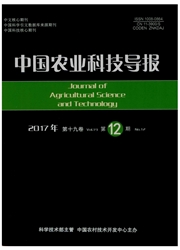

 中文摘要:
中文摘要:
以大花蕙兰与朱砂兰杂交种子萌发后形成的根状茎为试验材料,采用KT、6-BA和NAA三种外源激素对杂交兰根状茎进行实验,比较不同激素对根状茎增殖和分化的影响。单因素实验中,随着激素KT、6-BA浓度的增加,杂交兰根状茎的增殖率和分化率逐渐增加,但不成正比例关系。NAA浓度一定时,6-BA浓度为3 mg/L时,杂交兰根状茎的平均增殖率最高达到290%,6-BA浓度为4 mg/L时,根状茎的平均分化率最高达到85.64%;KT浓度为2.5 mg/L时,平均增殖率最高为300%;KT浓度为3.0 mg/L时,根状茎的平均分化率最高为87.89%。三种激素复合添加对杂交兰根状茎增殖和分化效果最佳。增殖效果最佳的培养基为1/2 MS+6-BA 3.0 mg/L+KT 2.0 mg/L+NAA 0.2 mg/L+琼脂粉7.0 g/L+香蕉80 g/L+蔗糖30 g/L+活性炭1 g/L,根状茎粗壮且长,增殖率高。分化效果最佳培养基为1/2 MS+6-BA 4.0 mg/L+KT 2.5 mg/L+NAA 0.2 mg/L+琼脂粉7.0 g/L+香蕉80 g/L+蔗糖30 g/L+活性炭1 g/L,分化苗生长良好,叶色深绿。本研究为杂交优株实现工厂化育苗奠定了一定的理论基础。
 英文摘要:
英文摘要:
Taking rhizome formed by crossing Cymbidium hybridum and Zhushalan as material, this experiment was carried out using KT, 6-BA and NAA 3 different exogenous hormones on the hybrid orehidrhizomes to compare the effects of different hormones on the proliferation and differentiation of rhizomes. In single factor experiment, along with the increase of hormone KT and 6-BA concentration, the proliferation and differentiation rates of hybrid orchid rhizomes were increased gradually, but not a directly proportional relation was formed. When NAA concentration was constant, 6-BA concentration reached 3 mg/L, the average proliferation rate of hybrid orchid rhizomes was up to 290%. When 6-BA concentration was 4 rag/L, its average differentiation rate was up to 85.64%. When KT concentration was 2.5 mg/L, the average proliferation rate was 300%, and KT concentration was 3.0 mg/L, its average differentiation rate was up to 87.89%. The combined addition of 3 hormones had the best effect on the proliferation and differentiation of hybrid orchid rhizomes. The best proliferation medium was 1/2 MS + 6-BA 3.0 mg,/L + KT 2.0 mg/L + NAA 0.2 mg,/L + agar 7.0 g/L + banana 80 g/L + sucrose 30 g/L + activated carbon 1 g/L. The rhizome thickness and length were larger and longer, and proliferation rate was higher. The best medium for differentiation effect was 1/2 MS + 6-BA 4.0mg/L + KT 2.5 mg/L + NAA 0.2mg/L + agar 7.0 g,/L + banana 80 g/L + sucrose 30 g/L + activated carbon 1 g/L. When the differentiation seedlings grew well with dark green leaves. This study has laid certain theoretical basis for industrialization of breeding superior hybrid orchid strains.
 同期刊论文项目
同期刊论文项目
 同项目期刊论文
同项目期刊论文
 期刊信息
期刊信息
